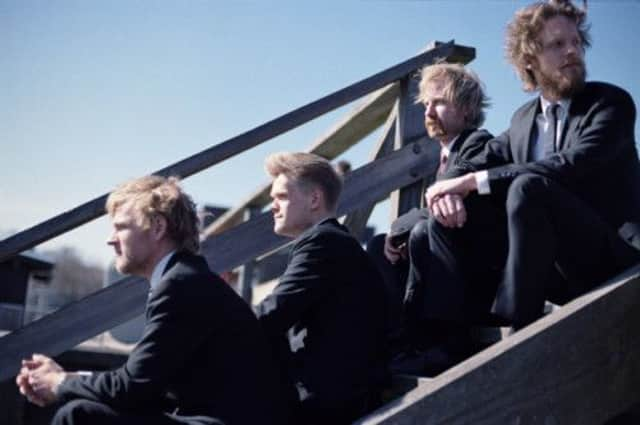Classical review: Lammermuir Festival


Danish String Quartet - Stenton Church
* * *
NYCoS National Girls Choir - St Mary’s Haddington
* * * *
It was in such moments on Saturday afternoon that the young Danish String Quartet – a group recently elevated to BBC Radio 3 Young Generation Artist status – revealed most effectively the empathy they have as a homogenous foursome.
They were helped by the amplifying acoustics of Stenton Parish Church, which imbued the Haydn opening with a generous and magical warmth. But if this was a performance of strong component parts, and enough masculine energy to power a city, there were issues that sold this inventive, mature work.
Advertisement
Hide AdLike the Quartet’s tendency to turn occasional cadence points into moments of hurried uncertainty; or to over-energise the textures in a way that was as rough at the edges as their collective blond hair. And while the viola tone was remarkable in its power and glow, there were times when it wrongly dominated the ensemble.
Such foibles were less frequent, in the Mendelssohn, which had both tenderness and vigour, its slow movement fugue a radiating presence amid the higher spirits of an altogether sunny performance.
Saturday’s evening concert by the NYCoS National Girls Choir in St Mary’s Haddington was a programme revolving ingeniously around the instrumental presence of harp, horns and organ. That enabled director Christopher Bell to include works imbedded in the choir’s repertoire – Britten’s Missa Brevis and A Ceremony of Carols – and to give a rare outing to Brahms’s Four Songs, Op 17 for female voices, horns and harp, and to premiere the similarly scored Four Songs from the Singin’ Lass, a festival commission by William Sweeney.
Sweeney’s handling of Scots poet Marion Angus’s words is simple and delicate, its instrumental underlay subtle and suggestive.This performance drew out the dreamy mystical Scottish elements in the music, not least in the distant clustered harmonies of Huntlie Hill. And it gave liquid flow to the music’s narrative aspirations.
It was also a neat nudge away from the sweet and harmonious Teutonic romanticism of the Brahms, sung with ripe precision, and the unmistakable lustre of the Britten.
There was a strange but effective moment at the start of the concert, where the Missa Brevis was prefaced by Alec Frank-Gemmill playing the solo horn Prologue from Britten’s Serenade for tenor, horn and strings. Whether that – being a semitone removed in key – led to the initial flagging in the choir’s intonation matters little, as the performance quickly grew in confidence.
Advertisement
Hide AdMoreover, John Kitchen was inventive in his handling of the austere Haddington organ, following that up with four of Brahms’s Chorale Preludes as a neat solo segue into the Brahms songs. Despite its unseasonal presence, A Ceremony of Carols was a ringing conclusion, as much for Sharon Griffiths’ unshakeable harp playing as the choir’s buoyant singing.